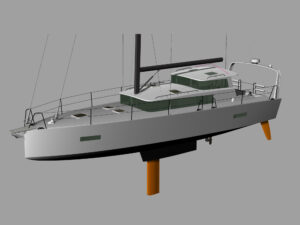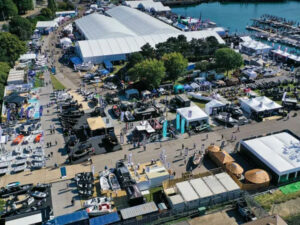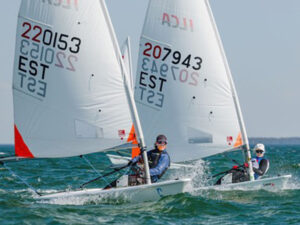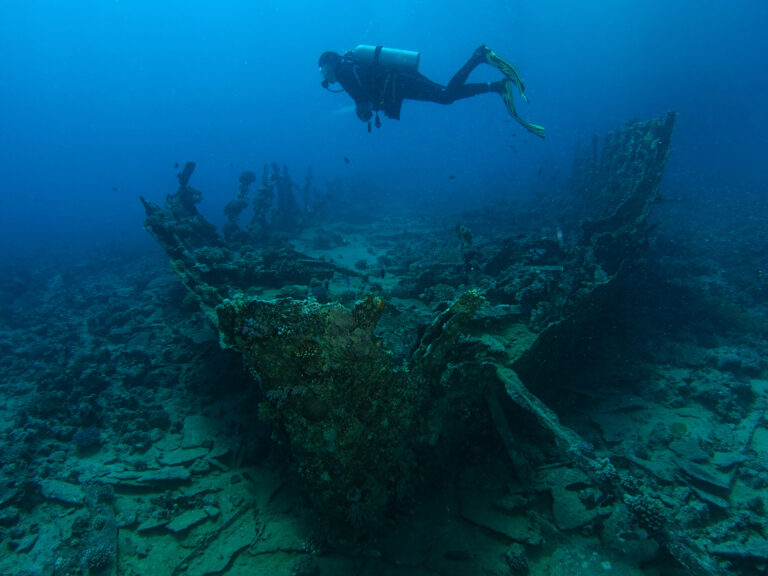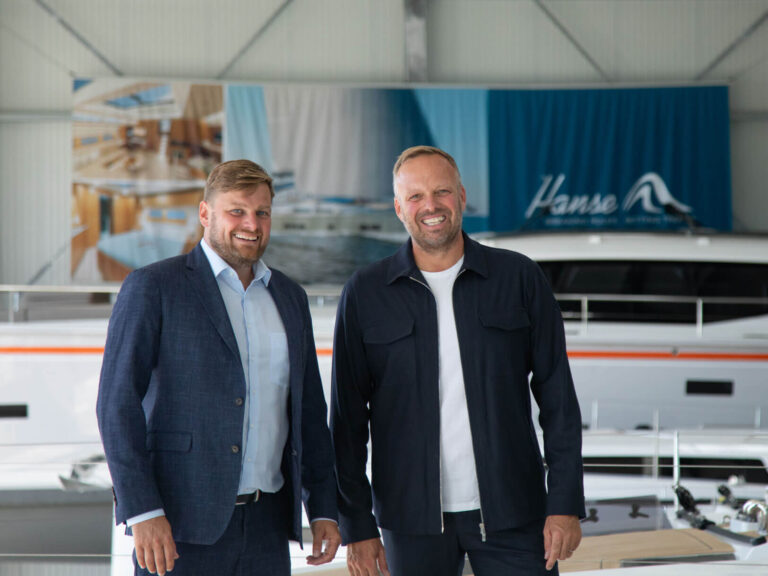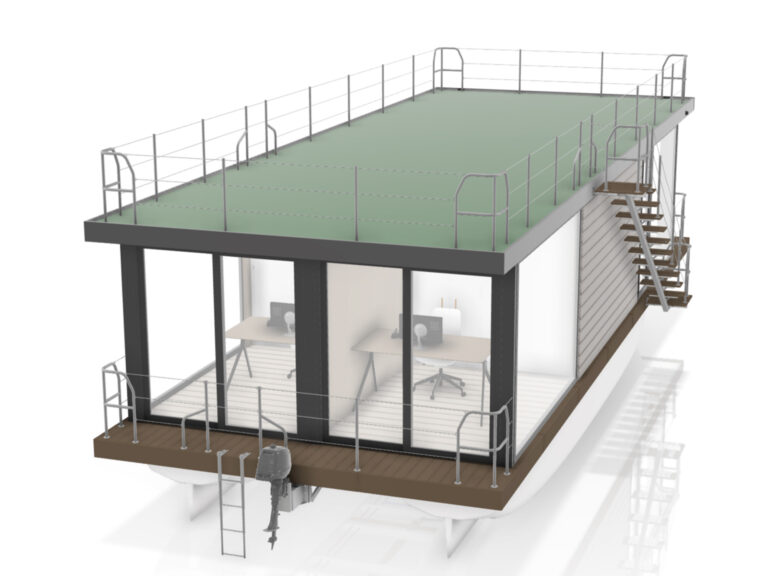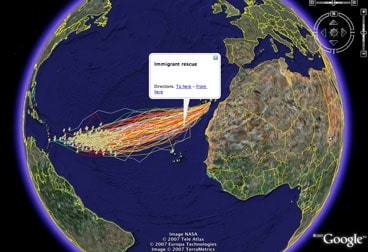
ARC368
Crossing the Atlantic Ocean downwind proved again not to be a cakewalk for many yachts in this year’s Atlantic Rally for Cruisers.
As the first boat reached St. Lucia on Dec. 7, twelve days after leaving the Canary Islands, the trailing fleet included one death, three broken booms, many blown spinnakers, a man overboard, a severely burned crew member, the rescue of a couple who abandoned their damaged yacht in trade winds of 25 knots, lumpy seas, and bands of squalls that kept crews exhausted on night watch.
But while the 236 yachts provisioned and practiced for just these eventualities, a new and tragic hazard crossed their paths–African immigrants packed into boats, bound for the Spanish Canaries. Four days after the 2007 ARC’s start on November 25, two of the yachts came upon a loaded boat 300 miles from the African coast. Crews had been warned to stay clear of the immigrant craft because of past incidents where immigrants, scrambling onto a would-be rescuer, capsized their boat and drowned.
The crew of If Only, a 24-meter British steel ketch, couldn’t outmaneuver the motorized fishing boat, and two immigrants scrambled aboard. After making what appeared to be threatening gestures, the immigrants were restrained. The yacht’s six-person crew spent a “difficult night playing tag with the migrant boat” until a Spanish rescue craft arrived at daybreak, said Jeremy Wyatt, ARC’s co-director. The immigrants were then turned over to authorities.
This was the second time in two years that an ARC yacht stopped to help a migrant craft. ARC’s rhumb line takes participants across the path of immigrants boats that have been blown to sea by prevailing winds and waves.
The number of migrants making the risky attempt at reaching the Spanish islands from sub-Saharan Africa has risen dramatically in the last three years. The Spanish Navy rescued dozens in 2006; bodies washing up on tourist beaches attest to an unknown number who never make it.
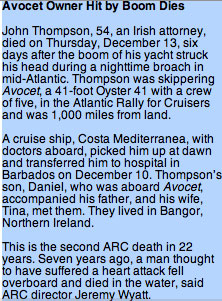
On the same day as the immigrant encounter, the skipper of Avocet, an Oyster 41 from Great Britain, was knocked unconscious by a boom, and later died (see sidebar). Aboard AAG Big One, a Russian-crewed Volvo 60 that was in the lead, a crewmember working in the galley was severely burned when the boat jibed. Both stricken crew were transferred to ships for hospitalization.
Two days later, GiGi, a British Swan 48, responded to a Mayday from Barbary Duck, an 11-meter Westerly abandoned by John and Francis Weller because of a broken chain plate and malfunctioning engine. The Westerly wasn’t sailing with ARC.
The crewman of the Norwegian vessel Lufelia who went overboard at night in rough seas was temporarily unclipped from the boat, said Wyatt. He was immediately picked up. In a second incident, five ARC yachts responded to a mayday from Spam, a sinking 31-foot catamaran that had lost its mast and was holed. The crew of Navillus rescued the three crewmen and proceeded to St. Lucia.
This year’s ARC is the largest in its 22-year history. The boats range in size from Ariel, a 7.64-meter Nordic Folk Boat, to Mariposa, a 29-meter Ed Dubois one-design. There are 25 multihulls. Thirty nations are representing, with 44 percent from the United Kingdom. Twelve are U.S. boats and eight are from Canada. Most boats make the 2,800-mile crossing in three weeks.


